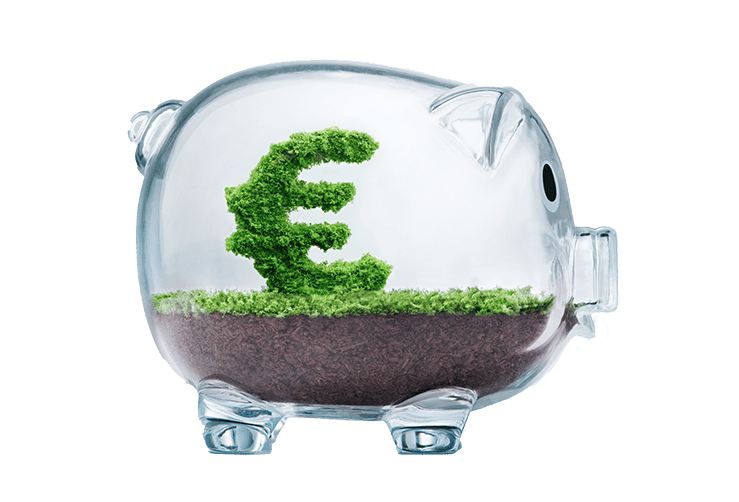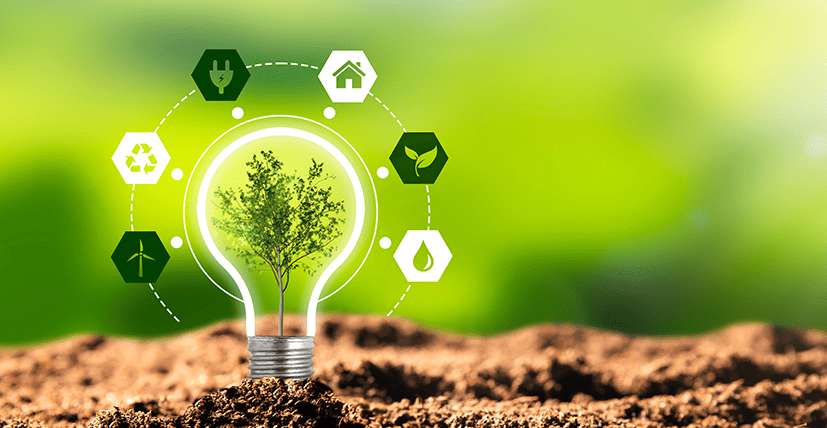The introduction of the Transition 5.0 initiative in Italy, backed by a substantial fund exceeding 6 billion euros, marks a significant stride towards embedding eco-conscious and digital advancements within the industrial sector. A key focus for businesses lies in understanding the eligibility criteria for securing funding, aimed at incentivizing the adoption of cutting-edge technologies and environmentally sustainable practices.
The italian Decreto Legge of March 2nd, 2024, as part of the PNRR, outlines a strategic roadmap for industrial transformation, emphasizing energy efficiency, digital advancement, and workforce development. With a vision to bolster the Italian manufacturing sector, the government's initiative aims to propel local companies to the forefront of global sustainability and digitalization challenges.
This article will discuss:
- Industry 5.0 as an evolution of the previous 4.0 transition.
- The different goals of the Industry 5.0 plan: Sustainability, Monitoring and Training.
- Analysis of the aid package: the sectors, rates and goals required.
What are the Differences between the Industry 4.0 Plan and Industry 5.0?
The shift from Industry 4.0 to 5.0 signifies a pivotal milestone in industrial innovation incentives, highlighting a shift towards a more comprehensive integration of energy considerations alongside digitalization.
The Industry 4.0 initiative, part of the initial wave of business support within the PNRR, boasts a substantial budget of 13.381 billion euros, accompanied by an additional 5.08 billion from the Supplementary Fund. Transition 4.0 aims to propel Italy's industrial landscape into the digital era by offering tax incentives for the procurement of both tangible and intangible assets, investment in cutting-edge software, as well as fostering research, development, innovation, and specialized training programs.
The Transition 5.0 plan stands out for its implementation of specific criteria designed to drive down energy consumption, mandating a minimum energy savings of 3 percent for production and 5 percent for industrial processes impacted by the investments. This innovative approach not only strengthens the objective of advancing digitization but also promotes the adoption of sustainable practices, embodying a strategic vision focused on the twin transition: digital and ecological.
In Transition 5.0, investments that promote energy efficiency and align with the set criteria will be rewarded with incentives based on predefined benchmarks. A significant change from the previous Industry 4.0 scheme is found in the requirement for certification of the interconnection of industrial assets and the possibility of accessing the tax credit in a unified way, in case it is eligible, rather than deferred.
In summary, while the Industry 4.0 plan maintains its support for a wide range of investments beyond energy savings, the Industry 5.0 plan charts a new course towards an incentive model that harmoniously combines energy sustainability objectives with digital innovation priorities, laying the groundwork for a future-focused framework centered on industrial efficiency.
MORE INFORMATION
Discover more about Italian Tax Benefits.

What does the Industry 5.0 plan encompass?
Industry 5.0 targets companies of all sizes, sectors and tax regimes in the country that undertake new investments in production innovation aimed at reducing energy consumption. This cross-sector opening confirms the ambition to stimulate a broad spectrum of industrial activities toward greater energy efficiency and sustainability.
Capital Goods
To benefit from Industry 5.0 incentives, it is necessary to invest in capital goods, both tangible and intangible, listed in Annexes A and B of the previous Transition 4.0 plan. These assets, which must be integrated into the company's management system or supply chain, should contribute to an innovation project capable of reducing energy consumption by at least 3% for the facilities and 5% for the production processes involved.
Solar Panel Installations and Energy Self-Sufficiency Systems
The partnership with the EU expands the scope of incentives to include customized programs for self-produced and self-utilized energy solutions, such as the installation of solar panels, underscoring the importance of energy independence for businesses.
Software
The Industry 5.0 Plan broadens its scope by placing a strong emphasis on software innovation, with a particular focus on applications, platforms and systems capable of promoting more efficient energy use within companies. This set of tools plays a vital role in overseeing and tracking energy usage and self-generation, highlighting the significance of integrated energy management within day-to-day business operations.
Equipping businesses with cutting-edge technologies that streamline data collection, analysis, and visualization, such as energy dashboards, empowers decision-making based on thorough and unbiased assessments. Leveraging IoT capabilities and cloud computing systems, the plan strives to translate data insights into tangible sustainability actions, propelling companies towards initiatives that not only uphold environmental ethics but also deliver cost-saving benefits through efficient energy reductions.
Within this framework, the pivotal role of cloud systems and IoT sensors emerges as indispensable, equipping companies with the means to document and validate reductions in energy consumption while bolstering their sustainability efforts. The vision of Industry 5.0 not only advocates for a shift towards eco-friendly manufacturing practices but also promotes the seamless integration of cutting-edge technologies into the national industrial landscape, representing a significant stride towards a smarter and more sustainable industry.
Staff Training
Acknowledging the crucial role of skilled human resources in driving a successful energy transition, the plan offers incentives for workforce training, limited to 10% of the investment in capital goods and with a maximum cap of 300,000 euros. These training programs, facilitated by accredited external organizations, aim to enhance the essential technical knowledge required to navigate the transition towards Industry 5.0
Industry 5.0 underscores a comprehensive approach to innovation, elevating not only cutting-edge technologies but also human capabilities, to steer Italian enterprises towards more sustainable, efficient, and globally competitive manufacturing practices.
SPEAK WITH OUR EXPERTS
Get in touch with our team for further details on the incentives.

How are the funds of the Industry 5.0 Plan distributed?
The Industry 5.0 Plan includes a total investment of 6.3 billion euros, allocated in three main categories: capital goods, self-consumption and self-production of energy, and training. The breakdown is as follows:
- 780 million euros allocated to capital goods,
- 890 million euros for self-consumption and energy self-production projects,
- 630 million euros reserved for training.
To maintain a well-balanced distribution of resources, the funds have been evenly split between the two years of the plan's implementation, providing approximately 3 billion euros annually.
Projects focusing on self-consumption and self-production of energy must be part of larger initiatives that involve the acquisition of capital goods. It's worth noting that investing in capital goods also unlocks the potential to access tax credits for purchasing essential tangible assets crucial for self-producing energy from renewable sources, excluding biomass.
For solar panel systems to qualify for incentives under Industry 5.0, they must feature panels produced in European Union member states with a minimum efficiency of 21.5%. The regulations outline a surcharge of 120% or 140% added to the base calculation for installations utilizing higher efficiency panels. This surcharge impacts not only module costs but also the overall expenses of the solar panel system, potentially leading to incentives of up to 63%.
The Rates
The plan includes a total of 9 incentive rates arranged in a matrix as seen previously for this category of aid, each of which can be increased by 1.2 or 1.4 times, depending on the efficiency of the solar panels used. This mark-up mechanism is specifically reserved for solar panel systems and does not apply to other capital goods or training.
This incentive structure reflects the goal of the Industry 5.0 Plan to stimulate investments that contribute to both the digital and energy transition by promoting the adoption of sustainable and advanced technologies in the industrial sector.
|
|
Share of Investment |
||
|
Energy Efficiency Share |
Up to 2.5 million |
2.5 to 10 Million Euros |
From 10 to 50 Million Euros |
|
Unit: 3 to 6% Process 5 to 10% |
35% |
15% |
5% |
|
Unit: 6 to 10% Process from 10 to 15% |
40% |
20% |
10% |
|
Unit: more than 10% Process more than 15% |
45% |
25% |
15% |
How can one access funding under the Industry 5.0 Plan?
Energy calculation and the role of the GSE
To access funding under the Industry 5.0 Plan, companies must demonstrate a reduction in energy consumption through an accurate calculation, which follows specific guidelines outlined in the regulations:
- Annual Calculation: Energy consumption must be recalculated on an annual basis.
- Reference to Previous Year: The reduction in energy consumption must be calculated by referring to data from the year prior to the start of investment.
- Correction for Variation: Savings should be calculated "taking into account fluctuations in production levels and external factors" that could impact energy consumption, guaranteeing that the calculation accurately represents the energy efficiency improvements brought about by the investments.
For newly established companies that do not have historical consumption data, Plan 5.0 provides an alternative approach based on "average annual energy consumption referable to a counterfactual scenario," defined according to special criteria defined in a regulatory decree. This makes it possible to establish an energy benchmark even in the absence of historical consumption, facilitating access to incentives for new businesses.
To obtain funding, companies are required to submit a set of documentation, divided into two phases, ex ante (before) and ex post (after) the implementation of the investment:
Ex Ante Phase:
- Advance certification of the investment.
- Ex ante communication to the Manager of Energy Services (GSE).
- Periodic communications on investment progress.
Ex Post Phase:
- Final certification of the investment made.
- Final communication to the GSE.
- Certification of the successful interconnection of the systems.
- Documentation proving the suitability and relevance of expenses.
- Certification of accounts by an auditor, attesting to the actual incurrence of eligible expenses and their correspondence to the company's accounting records.
This meticulous documentation process guarantees the accountability and efficiency of investments, ensuring that funding benefits are channeled towards projects that actively drive the energy and digital transformation advocated by Industry 5.0.
Get in touch with our team to learn more about the Incentives.




